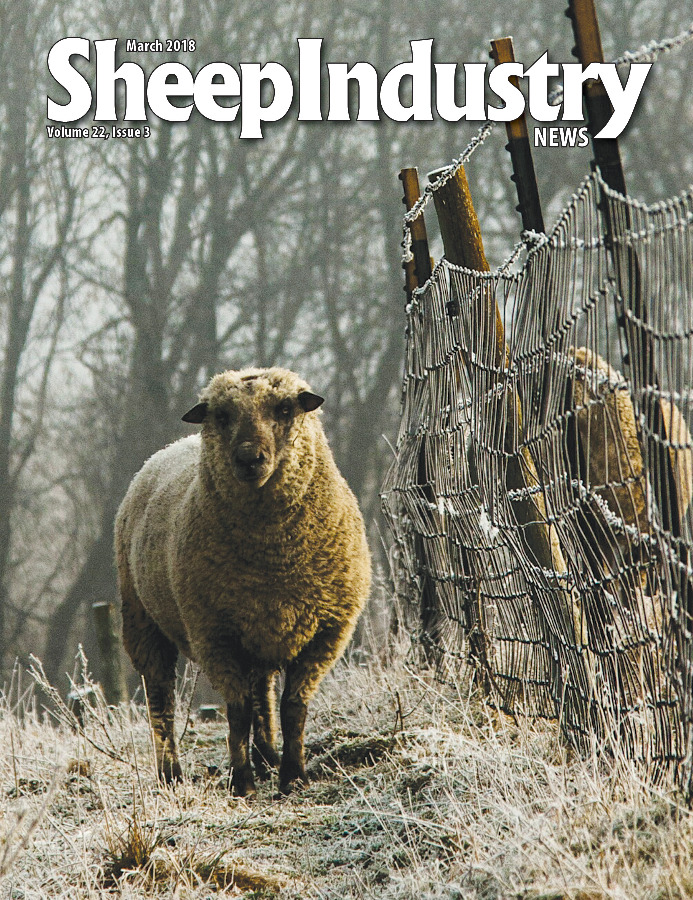KYLE PARTAIN
Sheep Industry News Editor
Shortly before the industry came together to meet at the ASI Annual Convention in San Antonio, state sheep associations were asked to submit their requests for the seventh round of State Mentor Grants through the Let’s Grow Program. These grants award $1,000 to each state association to provide for programs and educational opportunities to support new sheep producers in the state.
Less than two dozen of ASI’s 45 state sheep associations chose to submit applications, which were considered for approval during the Let’s Grow Committee’s business meeting at the convention. While I’m shocked that so many states chose not to even apply for the funds, I’m encouraged by the fact that 22 states will receive the money. Only 18 states took part in 2017, so it’s a step in the right direction.
We talk a lot at the national level of the sheep industry about wanting to increase the number of producers in our ranks – which would then increase the overall sheep numbers in the United States. But the fact remains that the state associations play a crucial role in this goal. When anyone at ASI receives a call from a prospective producer, the first resource we provide them is contact information for the state association. After all, who knows more about what it takes to run a sheep operation in that state than the producers who make up the state association?
Maybe state associations didn’t apply for the funds because they weren’t exactly sure how to use them. Maybe they didn’t know the program even existed. Regardless, I want to share some of the ways the 2018 applicants plan to use their mentor grants.
• The California Wool Growers will “fund approximately 20 to 25 regular small farm flock memberships (0 to 26 head) to the California Wool Growers Association for those new and beginning shepherds that participate in the 2018 Shepherding School hosted by Flying Mule Farm (in collaboration with UC Cooperative Extension).
• The Montana Wool Growers Association uses the funds to send mostly young producers to ag leadership conferences.
• The North Carolina Sheep Producers Association’s mentor program “pairs new producers with experienced producers. Mentors make themselves available to new producers for help and advice. New producers receive assistance in a variety of areas including animal husbandry skills, help with health issues, lambing, docking and castration, feed utilization and scrapie compliance.” The state also uses the funds to support information booths at state and regional fairs and workshops at the annual meeting.
• The Oregon Sheep Growers Association hosts a “one-day lambing school. While the program is limited in number, it has been very well received and is currently full. A follow-up seminar (topics to be chosen by participants) will be organized later in the year and open to any interested producer. Topics will be those of greatest assistance to novice producers.”
• The Pennsylvania Sheep and Wool Growers Association will use the funds to “develop or find better communication methods for marketing seedstock and marketing lambs and wool to harvest through the usage of online resources and connections to the industry. Usage of funds initially to assist producers in locating new seedstock in areas of Pennsylvania and beginning to develop a network of producers to fill market needs.”
• The West Virginia Shepherds Federation will “conduct three group sessions for beginning shepherds, ages 12 to 18, at different venues.”
• The Wyoming Wool Growers Association will use the funds to provide travel assistance for one first-time ASI Annual Convention attendee. “In our experience, bringing new attendees and young producers to the ASI meeting is a strong encouragement to them and incentivises them to continue, and even expand, in the industry. They learn from others at the meeting and they obtain excellent contacts in the industry whom they can turn to when they encounter difficulties.”
As you can see, there are lots of uses for the State Mentor Grants. I understand that $1,000 only goes so far in 2018, but there are still plenty of projects states can tackle with the funds. It’s essentially free money, so why wouldn’t you take it?



